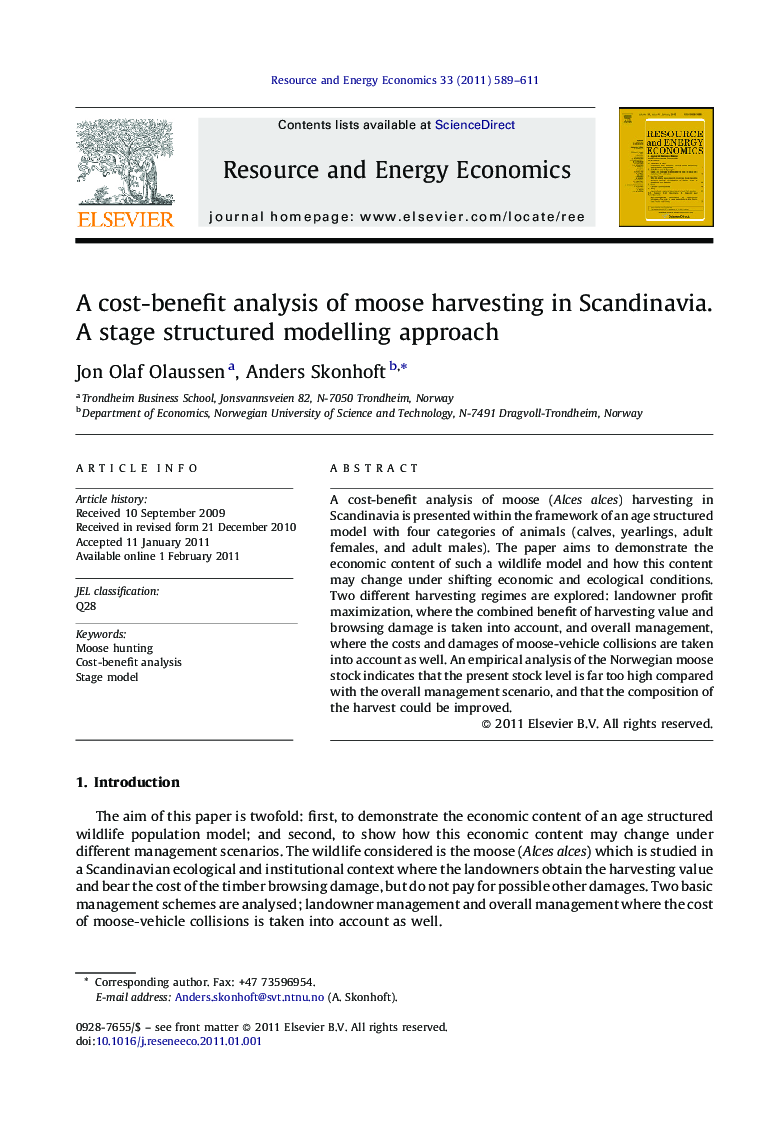| Article ID | Journal | Published Year | Pages | File Type |
|---|---|---|---|---|
| 985588 | Resource and Energy Economics | 2011 | 23 Pages |
A cost-benefit analysis of moose (Alces alces) harvesting in Scandinavia is presented within the framework of an age structured model with four categories of animals (calves, yearlings, adult females, and adult males). The paper aims to demonstrate the economic content of such a wildlife model and how this content may change under shifting economic and ecological conditions. Two different harvesting regimes are explored: landowner profit maximization, where the combined benefit of harvesting value and browsing damage is taken into account, and overall management, where the costs and damages of moose-vehicle collisions are taken into account as well. An empirical analysis of the Norwegian moose stock indicates that the present stock level is far too high compared with the overall management scenario, and that the composition of the harvest could be improved.
Research highlights► A cost-benefit analysis of moose (Alces alces) harvesting in Scandinavia is analysed. ► Four categories of animals are considered: calves, yearlings, adult females and adult males. ► It is shown that the per animal values are instrumental in determining the optimal harvesting composition.
